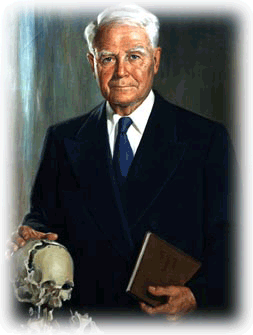What is Cranial Osteopathy?

William Garner Sutherland, D.O. invented Cranial Osteopathy in 1939. W.G. Sutherland, D.O. (1873-1954) was an early student of Dr. A.T. Still, who was the founder of Osteopathy. While a student at the American School of Osteopathy in the late 1890s he observed a skull, which had been mounted with each bone slightly separated from its articulation. He had the thought that the flat part of the temporal bone (which relates to the ear) was designed for motion, “like the gills of fish”. This was an inspirational moment that lay the seed for expansion of Dr. Still’s concept of Osteopathic philosophy into the cranial field. At that time anatomical texts had very little to say regarding the cranial bones. He thus began a decades long inquiry, studying the disarticulated bones and their articular (joint) surfaces, until he was convinced that they were designed for mobility. He then experimented on his own cranium, and over a period of time started applying these principles to his patients. He had remarkable results, relieving a variety of problems for which there were no other treatments. After thirty years of developing his diagnostic and treatment approaches, he began sharing his concepts and techniques with other interested Osteopathic physicians.
The main premise of Osteopathy in the Cranial Field lies in the understanding that there is a small but important motion between all the components of the skull including the bones and their sutures. Dr. Sutherland determined that there is a palpable movement within the body that occurs cyclically and affects all of the various body systems. He called that motion “Primary Respiration” because it was more important and more fundamental than breathing. Primary Respiration was originally described as affecting the motion of the paired bones in the cranium and the motion of the reciprocal tension membranes which included the whole central and peripheral nervous system coverings or dura. Later on in his scientific exploration, Dr. Sutherland realized that even the body fluids such as Cerebrospinal fluid (CSF) and interstitial fluids responded to this tidal influence of primary respiration and that any organ system, fascial system or connective tissue system could be evaluated in terms of its ability to respond to the cyclical fluctuation of Primary Respiration. This movement is a part of a rhythmic movement of the fluids of the body that is vitally important in the expression of health, including the maximum function of the body’s own healing system. Trauma to the head or body can alter or hinder the free movement of the fluids of the body, often having dramatic effects on the person’s health and function.
A core trauma which establishes the potential dysfunction of many developmental processes and growth itself is birth trauma, where the baby’s skull is impacted by repeated compression against an unyielding cervix or the birth canal or by vacuum extraction in a difficult labor. Even an almost imperceptible alteration of the skull’s natural configuration and movement can lead to such disorders as colic, the inability to swallow in childhood or later years, inability to suck, frequent spitting up, chronic ear infections and/or developmental delays. Trauma can also lead to low back problems, headaches, breathing and digestive disorders, joint pains, menstrual disorders and sinusitis.



